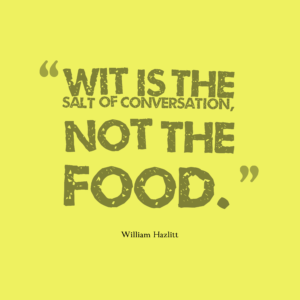 Why is emotion so important in writing? Because when we connect with our reader on an emotional level, we engage them and keep them interested. Even what should be the most fascinating facts ever revealed will lose reader interest when offered with dry rationality and no attempt to connect to feelings those facts could evoke.
Why is emotion so important in writing? Because when we connect with our reader on an emotional level, we engage them and keep them interested. Even what should be the most fascinating facts ever revealed will lose reader interest when offered with dry rationality and no attempt to connect to feelings those facts could evoke.
As an example, I have several books on Viking history, two of which share an almost identical structure and table of contents. One? Is written to engage the emotions of the reader, telling the history in such a way that I am allowed to picture it in my mind. The other is not poorly written by any stretch, but took twice as long to get through because I kept getting bored…despite being truly interested in all the topics covered.
Emotion is key. Let me say that again.
Emotion. Is. Key.
So, how do we use that key to unlock the door to reader engagement?
First, let’s begin with defining what we mean by emotion. It is not the potential for feeling. It is not the tragedy or the celebration, it is the feelings either of those two events evoke.
Feelings as defined in Robert Plutchik’s Wheel of Emotions that are at their most basic level: Fear, Anger, Sadness, Joy, Disgust, Surprise, Trust & Anticipation. But Book 2 of Aristotle’s Rhetoric lists those basic emotions as: Anger, Friendship, Fear, Shame, Kindness, Pity, Indignation, Envy, & Love. You notice that arguably the most powerful, sought after emotion on the planet isn’t even included in the first list, which goes to show that even the “experts” don’t agree, but we still must find a way to reveal these elusive feelings, however we define them.
 It’s too easy to fall into the mistake of believing that we create emotion when we create an emotional situation, but until we fully realize that potential for the reader, via our characters, our language and our narrative we’ve only taken readers on half the journey. In fact, if left there, the only emotions we are likely to engender are frustration, anger and disgust.
It’s too easy to fall into the mistake of believing that we create emotion when we create an emotional situation, but until we fully realize that potential for the reader, via our characters, our language and our narrative we’ve only taken readers on half the journey. In fact, if left there, the only emotions we are likely to engender are frustration, anger and disgust.
Telling a reader to feel an emotion isn’t going to work, not unless we’ve built up emotional language and character reaction so the reader can have an aha…that’s the emotion I feel moment.
So, how do we do this? How do we build the emotional arc, not just inform the reader it is there? How do we allow the other end of our writing journey, the people who read what we write…to feel, to experience the story in a way s/he can fully realize the emotional potential of the plot?
It begins with the language we use. There is a difference between what we might term emotional words and those that are more intellectual in bent. Take for example, the word accelerate – if you use the term speed up instead, it is more accessible for the reader…allows a sense of emotion not generally associated with accelerate.
This is not to say that intellectual language has no place in our writing. Of course it does. Words are our tools and all are at our disposal, but if we want to make readers feel, we use the language to do so. Additionally might in a certain spot strategically become there’s more, circular => round, container => bag, or bottle, etc., fidelity => faithfulness, pleased => happy, and so on. Do you see? Can you feel the difference in these words?
Beyond word choice, what do we do to ensure emotion is forefront in everything we write?
We draw characters that are three-dimensional and fully developed. We do not write caricatures, or depend on tropes, reader familiarity, or anything else that makes it easy on us but awfully boring for readers. We motivate the actions of our protagonists, antagonists and secondary characters so their actions not only make sense, but are instinctive to the reader. A past experienced, steeped in some deep emotion is a good place to start, but it is not the end. Who of us is influenced by a single event in our past without changing, growing, learning? So, build on that first event, give a reason it still impacts the character, is still driving them to do x, y, & z.
But let’s not forget that for a plot to drive emotion, it must have emotion and that means at this point, we are searching for both an internal and external conflict as vehicle for feelings we want to evoke. For example, your protagonist may be on a quest to save the princess, but if there isn’t some internal thing driving him (or her), that quest becomes just another uninspired journey through the universe (or Outback, or small town America). But give an internal conflict, the hero(ine) must save the princess for the sake of all in his/her kingdom, only doing so will destroy the one s/he holds dear.
Answer the why’s of this in a way that allows the reader to feel emotion, to connect with and care for the character and you’ve written a much stronger story. An emotional story.
Finally, and possibly, probably, the most important element of all to writing emotion? Write from your heart. Let your own emotions get involved. Forget marketing studies, trends, editorial feedback that may, or may not come. Even, for a while, forget the reader on the other end and write what is in your heart to be written. I pass a promise on to you that the late Kate Duffy made to me on this, the story will be better for it.
Happy writing!

